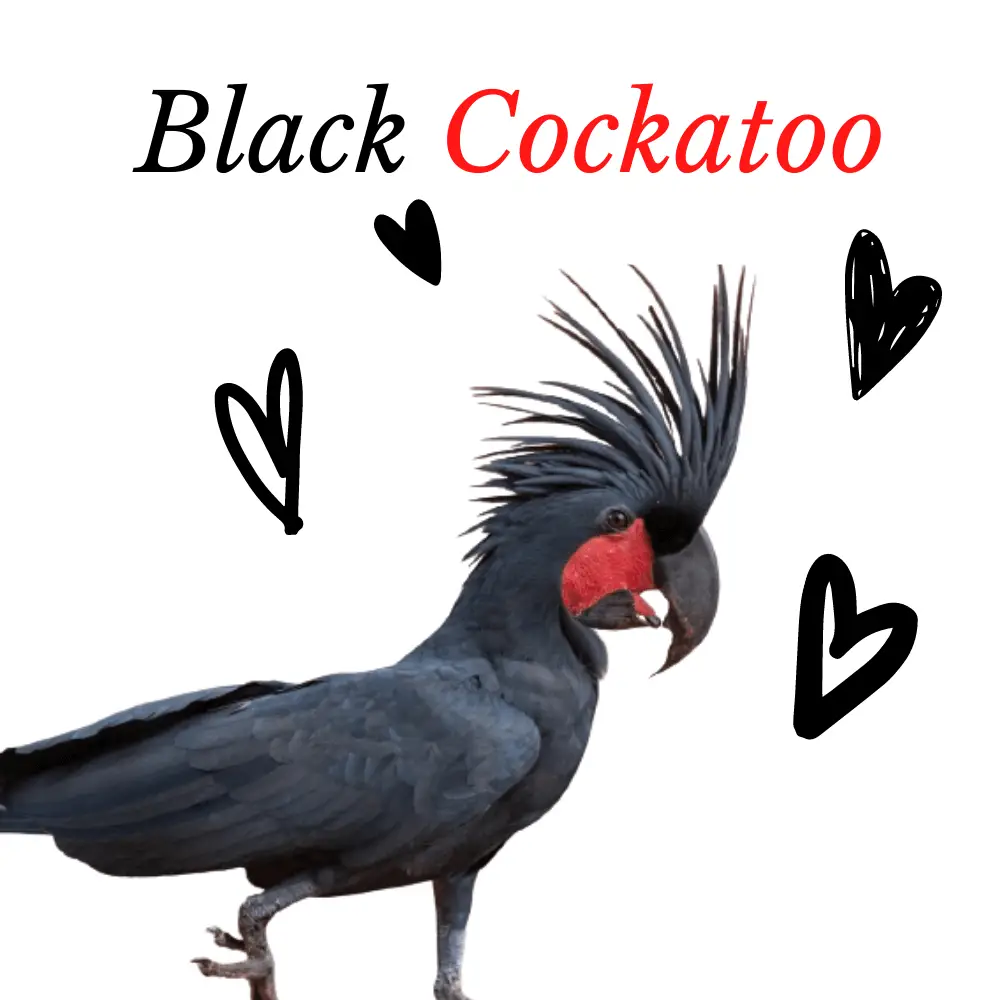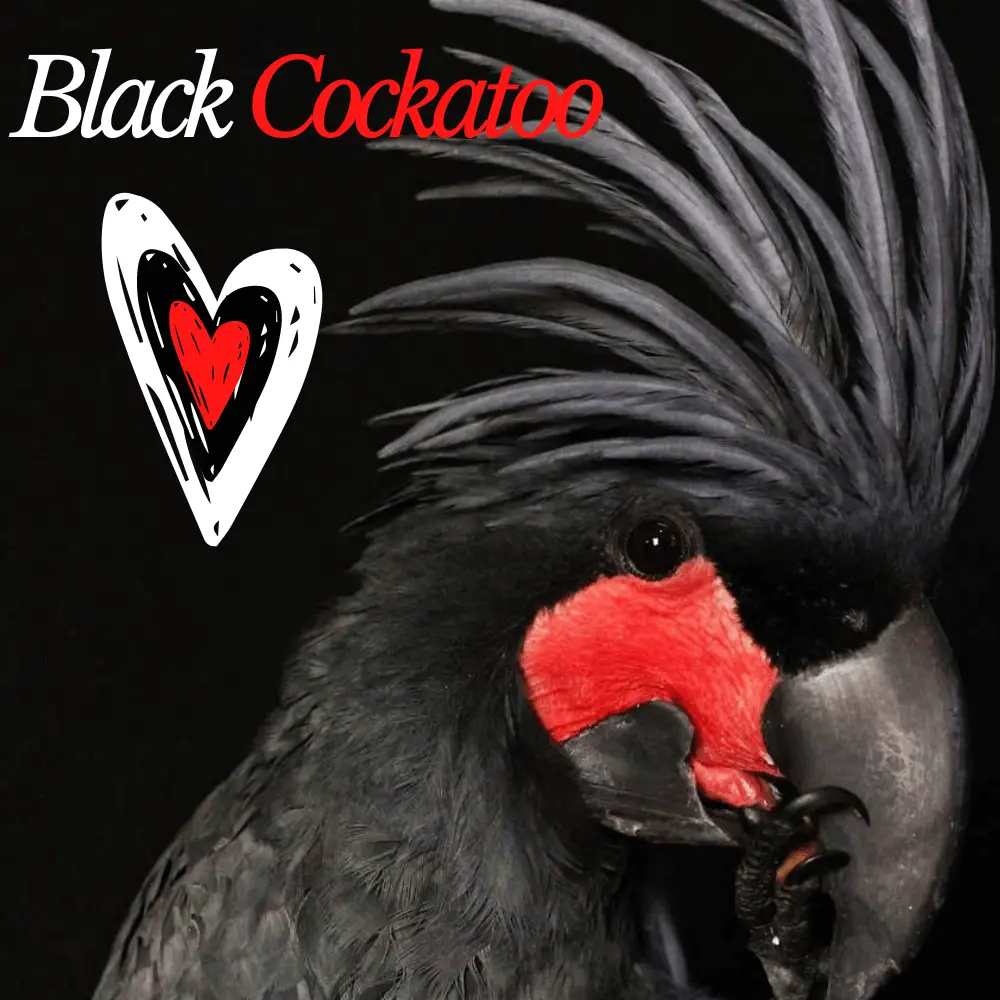
The black cockatoo ( Probosciger aterrimus ), also called black microglossus , is a species of bird in the family Psittacidae, the sole representative of the genus Probosciger. This classification has been confirmed by genetic studies.
Description
Red-tailed black cockatoo in flight.
Adult, it is one of the largest parrots. This is a 50-70 cm long bird weighing between 500 g and 1 kg. The red-tailed black cockatoo is also known as Banksian or Banks’ black cockatoo. The Black Cockatoo is characterized by its black color (including the beak and legs), its large crest, and one of the largest beaks (9 cm long) among parrots; and only the Hyacinth Macaw has a beak larger than its own.
Its beak has the particularity of having a lower part that can fit into the upper part, which allows the bird to wedge a nut between its tongue (red with a black tip) and its mandiblesuperior and to open it with its lower mandible.
He has a red spot on each cheek corresponding to a bare area of feathers. This changes color when he is worried, sick, or nervous.
Sexual dimorphism is not very marked: the upper mandible of the beak is smaller in the female.
Immatures show greyish-white bill and yellowish-white coverts.

Food
It feeds on seeds, berries, plants, insects, and insect larvae. Its beak and tongue are designed to easily open nuts and extract them from their shells.
Distribution and habitat
This bird inhabits the Aru Islands, New Guinea, and the Cape York Peninsula ( Australia ). The subspecies of New Guinea and neighboring islands ( goliath and stenolophus ) are increasingly rare in the wild where they are very strongly threatened by trafficking towards the countries of the Middle East and those of the former bloc. Soviet.
It frequents humid tropical forests, but also dry forests.
Behavior
It generally lives alone, in pairs, or in small bands of 5 to 7 individuals.
Reproduction
The Black cockatoo from the age of four. The breeding period is from August to January; the female lays a single egg in the hollow of a very high tree which will be used from year to year.
The egg is incubated alternately by both parents for 30 days. The chick will remain in the nest for 100 to 110 days. The baby bird will not be able to start flying for another two weeks.
Scream and use of percussion
In the wild, this bird uses four different very piercing calls that can be heard from afar. It also has the particularity, observed only for the populations of the York peninsula, of tapping with a branch of about 20 cm that it makes on the trunks of trees to produce a dull noise which is heard 100 m away. and which he uses to court females. Excluding man, it is the only animal known to use a self-made percussion instrument to play a rhythmic piece.
Longevity
This bird can live up to 50 years on average.
Pet
Because of its appearance, it is a very popular pet, especially in the United States, but very rarely in France. It reproduces very poorly in captivity because it is rarely installed in conditions allowing its well-being.
This bird requires an aviary several tens of meters long, otherwise, the male can kill the female. It is wrongly said that they should be kept alone because of the aggressiveness of individuals living in too-small spaces.
Preservation
There is a European Association of Zoos and Aquaria (EAZA) European Endangered Species Program (EEP ) dedicated to this species. This is coordinated by the ZooParc de Beauval, in France.
Subspecies
According to the reference classification (version 5.2, 2015) of the International Ornithological Congress, this species consists of the following four subspecies ( phylogenetic order ):
- Probosciger aterrimus stenolophus (Oort, 1911);
- Probosciger aterrimus goliath (Kuhl, 1820);
- Probosciger aterrimus (Gmelin, 1788)
- Probosciger aterrimus mcgivriossus (Mathews, 1912) ;




















